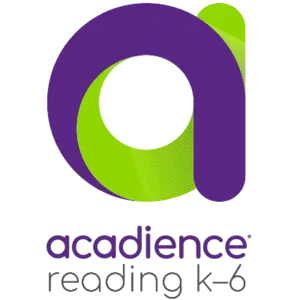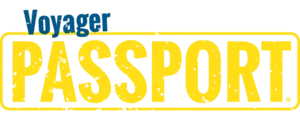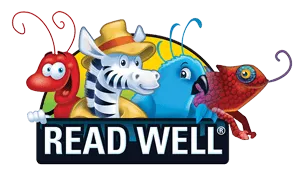A Guide to Optimal Oral Language Development
Enhance oral language development with these effective student engagement strategies. Elevate learning and foster communication skills.
Nurturing oral language development is a vital responsibility for teachers when evaluating their students’ growth. This aspect of development transcends linguistic proficiency—it encompasses comprehension, expression, and social interaction. Teachers can support oral language development by orchestrating meaningful discussions and creating a supportive environment where students feel empowered to express their thoughts, pose questions, and engage in active listening.
Understanding Oral Language Development
Oral language is a complex system of spoken communication that includes different components: phonology, morphology, syntax, semantics, and pragmatics. These elements work together when we speak in various situations.
- Phonology examines the sounds of language and how they form words.
- Morphology explores word structure and meaning.
- Syntax involves arranging words to create coherent sentences.
- Semantics delves into the meanings of words and sentences.
- Pragmatics covers the social use of language, such as conversational conventions.
Learning oral language progresses through distinct stages, each building on the previous one. As students advance, they begin to combine words to express meaning, known as the telegraphic stage. It is important to incorporate foundational semantic knowledge throughout the oral development journey. This helps students become more receptive to vocabulary and effectively synthesize words and phrases for communication.
Strategies for Fostering Oral Language Skills
Young learners use language to encounter peers and engage in social interactions. It serves as a means to share information, ask questions, or express feelings. The comprehension of language for a student increases during daily interactions, which is why it is imperative to create healthy learning environments that promote purposeful conversations, encourage playful learning strategies, and support students from all different levels and backgrounds.
Creating a Language-Rich Environment
A language-rich classroom is full of words, conversations, and reading and writing activities that allow students to naturally learn and absorb language. It gives them a love for language and communication.
Educators can integrate various strategies and practices to promote active engagement, meaningful interaction, and authentic language experiences. One prime example of cultivating a language-rich environment is to fill the classroom with tangible prints inclusive of literature, words, labels, and environmental elements.
Engaging In Meaningful Conversations
Engaging students in purposeful dialogue allows them to refine their ability to express ideas and articulate thoughts while also developing active listening skills. One effective strategy for promoting meaningful conversations is to create opportunities for structured peer interactions and small-group discussions. By organizing students into heterogeneous groups and providing thought-provoking prompts or discussion questions, teachers can encourage active participation and promote the exchange of ideas and perspectives.
Encouraging Storytelling and Narrative Skills
Practicing storytelling helps students develop their communication skills and supports their self-expression. One effective strategy for nurturing storytelling and narrative skills is to provide students with opportunities to engage in oral storytelling sessions. Educators can also engage students by asking questions that allow them to imagine and then voice new parts of a story or by encouraging them to retell it aloud to their peers. Storytelling and regurgitation enhance student literacy competence and language comprehension.
Utilizing Oral Language Games and Activities
Educators can create opportunities for students to practice and refine their oral language skills by leveraging the excitement of games. By default, games promote collaboration, creativity, and problem-solving abilities. The peer learning that takes place through games is also an important element of language learning that promotes conversation and connection.
One effective oral language activity is to practice songs out loud. As they sing along in a group setting, students will develop receptiveness and expression. Show-and-tell games are also effective—they give students the chance to use their vocabulary to describe an object to their peers.
Incorporating Technology to Enhance Oral Language Learning
Technology and digital tools are strategic solutions that cater to diverse learning styles. Various sources such as educational apps, podcasts, and digital storytelling platforms offer students engaging avenues for exploring language in context, honing their listening comprehension skills, and expanding their vocabulary.
Adaptive software platforms allow students to create and share multimedia stories. These activities foster creativity and self-expression while providing opportunities for authentic language use and communication. These platforms, as well as language learning apps, offer personalized learning experiences tailored to students' individual needs and proficiency levels.
Supporting Diverse Learners
Inclusivity ranks at the top of the list when promoting a learning environment for students with diverse learning styles, unique linguistic backgrounds, and different communication needs. By adopting a culturally responsive approach and embracing the principles of Universal Design for Learning (UDL), educators can create a learning environment where every student feels valued, respected, and empowered to participate fully in oral language activities.
One key strategy for supporting diverse learners is to provide scaffolding and differentiated instruction to meet the varying needs and abilities within the classroom. By providing flexible pathways to learning, educators can ensure all students have access to meaningful oral language experiences.
Final Thoughts
To support the oral language development of students, educators can cultivate a language-rich environment, expose them to diverse linguistic input, and create ample opportunities for meaningful interaction. They can also incorporate the use of technology, games, and storytelling activities. Voyager Sopris Learning® also offers reading solutions that include repeated oral practice, like Voyager Passport®, Sound Partners, and Read Well®.
Voyager Sopris Learning offers universal screening and progress-monitoring assessments for critical reading skills, also known as Acadience® Reading K–6. These assessment tools are designed to help educators identify students who have not reached grade-level benchmark goals or who are struggling with essential skills—including oral language proficiency.



